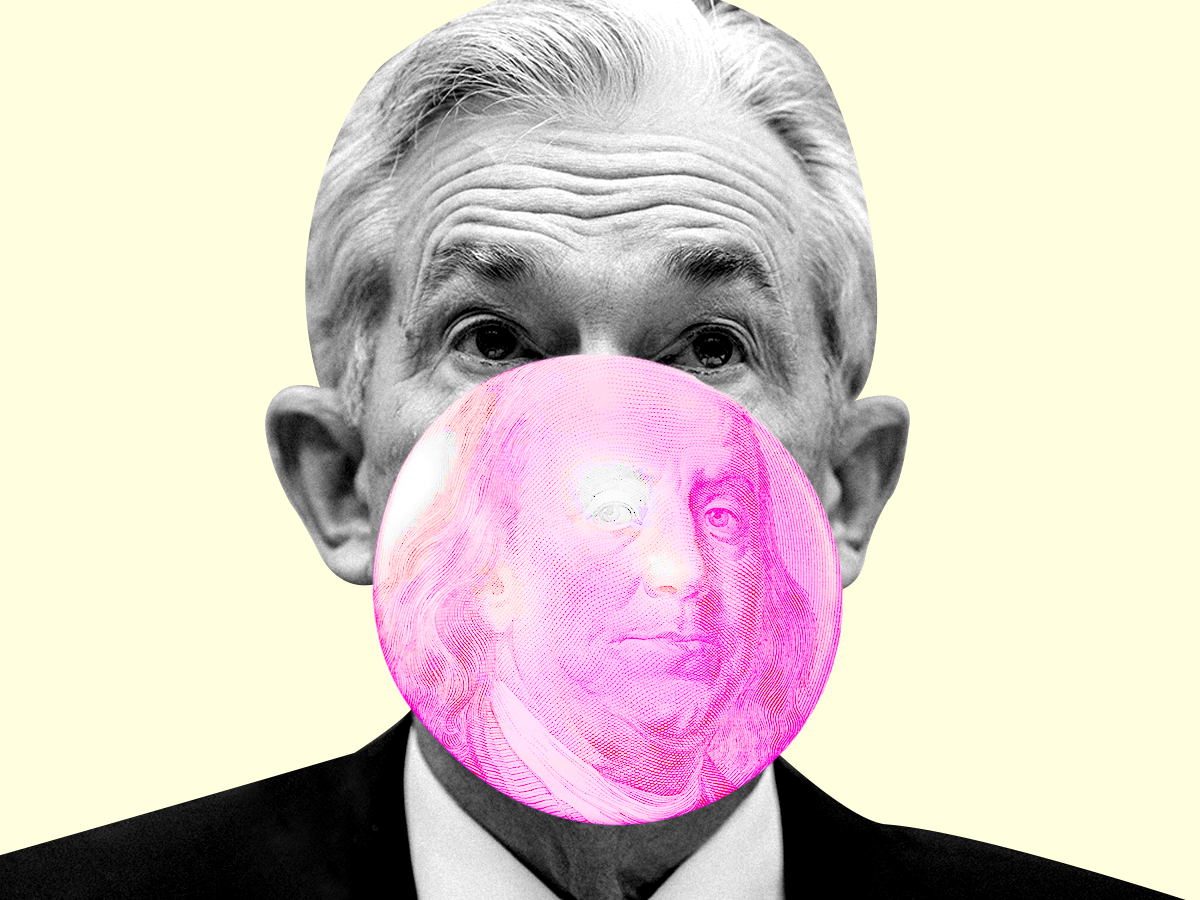The collapse of Silicon Valley Bank is a result of a massive market bubble finally popping. Wall Street commentators agree the Fed has had a hand in the chaos via its aggressive rate hikes. “It is not a stretch to say that this episode is emblematic of the higher-for-longer rate regime,” Deutsche Bank analysts said. Loading Something is loading.
Thanks for signing up!
Access your favorite topics in a personalized feed while you’re on the go.
The collapse of Silicon Valley Bank is the natural result of the “everything bubble” that’s engulfed markets in the last decade finally bursting. And now that a new rate environment is upon us, the market should expect more of these chaotic episodes.
The tech-focused bank’s spectacular downfall stunned investors this week. SVB’s stock plunged over 80% and the firm’s losses wiped out $55 billion from Wall Street’s top four banks in a day, before the bank was eventually shut down by regulators on Friday.
“What do you get when you see one of the biggest hiking cycles on record, alongside one of the most inverted yield curves in history, at the same time as seeing one of the biggest tech bubbles bursting in history, coupled with runaway growth in private markets,” Deutsche Bank analysts wrote Friday.
They continued: “The answer is that you get nights like yesterday where SVB Financial Group closed 60.41% lower on the day, wiping out $9.6 billion in market value. It is not a stretch to say that this episode is emblematic of the higher-for-longer rate regime we appear to be at the start of.”
SVB’s steep losses on its bond portfolio — the announcement of which kicked off its decline in the middle of last week — were a direct result of the Fed’s aggressive rate hikes over the last year, as its holdings of longer-term Treasuries and mortgage securities cratered in value with rising interest rates.
It marked the conclusion of a so-called everything bubble that central bankers help blow up by keeping rates artificially low, pumping the market full of liquidity, and generally making conditions so favorable for asset prices that they seemed like a can’t-lose investing proposition.
SVB is merely the latest casualty of that era coming to an abrupt end, and it illustrates the problems for investors and firms that saw huge success in an unprecedented period of loose financial conditions. As rates rise, and less risky investments start offering attractive yields, more and more money is going to be pulled from things like high-growth tech stocks, crypto, and privately held start-ups.
So to recap: the Fed both inflated this bubble and now wants to pop it.
This week, legendary investor Jeremy Grantham slammed the central bank for creating bubbles with its policy, calling its influence over markets a 36-year-long “horror show.”
“They’ve engaged in policies that drive up the prices of assets, other things being even, and create spectacular overpriced bubbles. They then break because that’s what bubbles have to do. They simply break off their extreme overpricing, and we pay a very tough price,” Grantham said in a recent interview with Bloomberg’s What Goes Up podcast.
Other Wall Street commentators have also slammed the Fed’s aggressive response to inflation, warning that an epic stock market crash is now a given as the huge bubble the central bank itself created looks poised to burst.
The risk of a crash is higher after Fed Chair Powell this week signaled steeper rate hikes into 2023, according to Mohamed El-Erian, and stocks could crash as much as 20%-30% over the next few months, according to Morgan Stanley strategists and markets guru Larry McDonald.
“We’ll have to see how this story develops but something always breaks hard during or after a Fed hiking cycle. Is this another mini wobble on this front or the start of something bigger? Tough to tell but I would be stunned if there weren’t many more casualties of this boom-and-bust cycle. Don’t forget, we haven’t been in recession yet,” Deutsche analysts warned.
